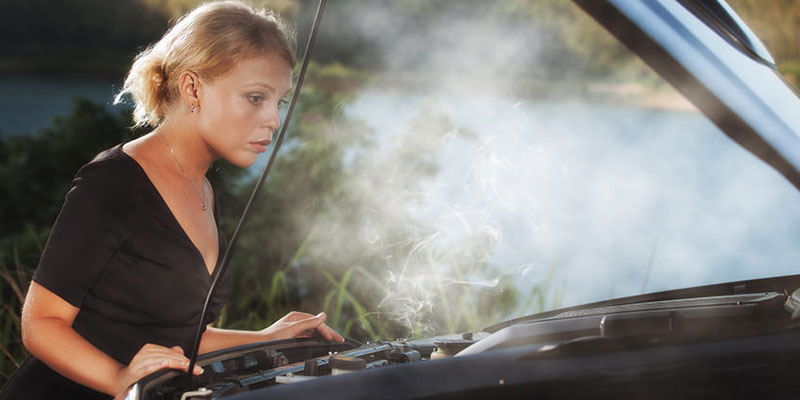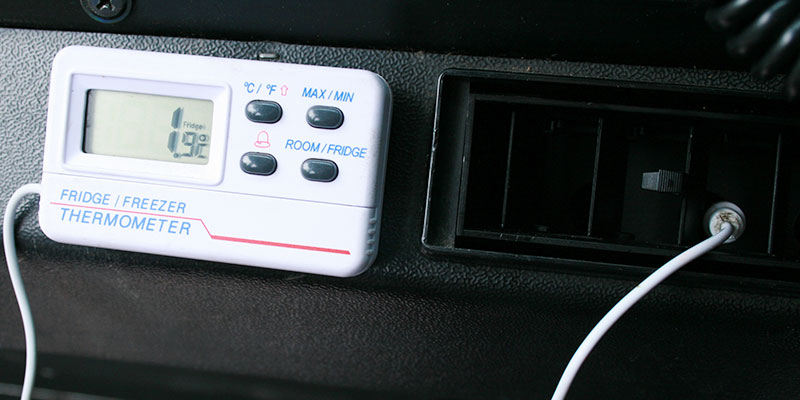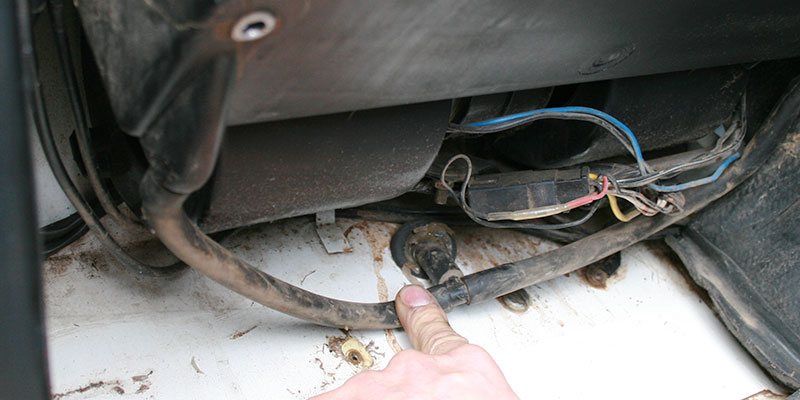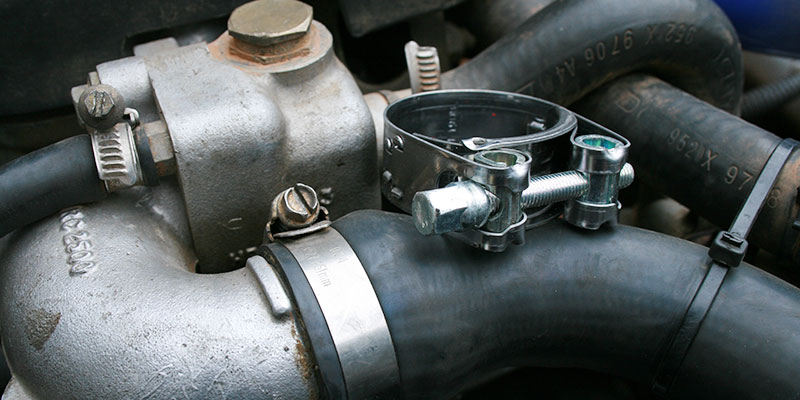
There is a lot of importance placed on prepping your Land Rover for winter, the magazines run whole articles on it, social media discussions abound on the subject. But what about summer?
OK so we are not always blessed with long hot summers in the UK but that doesn’t mean you can ignore the effects that hotter, drier weather will have on the performance and economy of your Defender.
On a hot and sunny day you’ve all seen the them at the side of a road, probably on the way back from a green lane trip or pay‘n’play day, covered in a layer of stickers, and then a layer of mud with the bonnet propped open and whisps of steam emerging from the front.
A couple of trips frolicking in the mud earlier in the year went by without a hitch, but now, with the radiator fins all clogged up the poor beast has died of heat exhaustion, leaving a couple of young lads with unsuitable footwear scratching their heads as they peer under the bonnet. Now that shouldn’t happen to a fine British steed, after all Land Rover owners are renowned for their fastidious maintenance; so how are we going to prepare for a hot summer?

AIR CONDITIONING
You’re thinking about summer before it arrives, so turn your Air Conditioner on and stick a thermomether in front of the vents. Is it cold enough for a hot summers day? If not, then get to the A/C Mechanic and have it done, before the first hot day, when everyone else realises they’re A/C isn’t quite working well and the guy gets booked up three weeks in advance. If it’s been a few years since it was last gassed and serviced, then get it done now, you’ll be congratulating yourself on that decision on the first hot day in slow traffic. On some Tdi and TD5 Defenders the A/C has a drain hose that drips the condensed water onto the ground on the passenger side, just because water comes out from here doesn’t mean that water isn’t ending up under the floor mats to rust out the bulkhead! Remove the kick panel in the passenger side footwell and you will see a T-Piece that joins two drain hoses together to exit the car as one. Pull them off and clean them. It is possible for one to get blocked and end up wetting the floor, while the other side gives the impression that all is fine by continuing to drain onto the ground.

RADIATORS

Remove the grille and clean out any mud built up on the fins, if it’s thick you can pressure clean it, or soak it with a hose and work the silt out with an old paint brush. Once it’s all clear and dry, blow though with compressed air and remove any remaining dust. Flush the radiator out and replace the coolant with one suitable for your engine. Remember that glycol isn’t good for fish, so drain it over a grassy patch instead of into the gutter where it will get into waterways. You shouldn’t need a glycol coolant over the summer, and if you can avoid using one altogether, then draining the radiator won’t raise pollution issues in the future. A SIII had a little tap on the bottom of the radiator, which Land Rover should really re-introduce! Nowadays you’re going to have to remove the bottom radiator hose to drain the coolant. While you’re at it, check the condition of the hoses and the clamps. Sometimes the screw type clamps lose their grip after they’ve been released a few times. If you haven’t been using a rust inhibitor and it all looks very rusty, then seriously consider pulling off the water pump and checking that too. If the vehicle is old, the coolant looks sick, or you’ve had radiator problems, then spend the half hour at a radiator shop and have it thoroughly flushed and pressure tested, it may need rodding, soldering or replacing. Disconnect the heater hoses and flush the heater out separately with a garden hose, until no colour from the previous coolant is visible.
UNDER BONNET
While you’re under there, now’s as good a time as any to replace the fan belts. With the belt off, check the fan for bearing wobble, and spin it to make sure it turns smoothly. The biggest leaker in the engine bay seems to be the power steering return line. Check it, replace the clamp or the hose as required and give the area a good degrease. The less insulating sludge you have on the outside of your engine and transmission, the better it will dissipate heat. Plus a clean car makes diagnostics faster and more accurate and that reduces a cascade of repairs, where one thing is masked or hidden and doesn’t become obvious until it’s damaged something else, which then requires yet another item to be removed and replaced.

Now depending on which engine you have, and how old it is, and where you spent the winter and where you intend to spend the summer, then you may also need to consider a change of grade in the engine oil you are using.
If you have a turbo-charged vehicle, then remove the intercooler hoses and inspect them for splitting and delamination. This would also be a good time to flush out the intercooler. The intercoolers job is to cool the air the turbo pumps out, allowing it to contract in volume, thus allowing more air to be sucked in with every stroke of the engine. In the summer, not only is the air the turbo is sucking in hotter, but the air running through it’s fins to cool it down is also hotter. So give the thing a helping hand and flush out any oily residue.
With the warmer weather will come the bugs. Consider a radiator mesh to stop them clogging your radiator, and think about what you’ll need to get them off your windscreen too. A few drops of dishwashing detergent and a splash of vinegar works pretty well in the washer bottle. Make sure the jets are all in good alignment. Occasionally small grit gets in there, but you can pull the hoses off and blow the jets and hoses out with some compressed air.
LIGHTS
Long trips far from home, or long days at the beach, will often result in more night driving. The heat of the day on it’s own may necessitate this. So don’t just bolt on your driving lights, make sure they work, they’re secure and don’t vibrate and that they’re optimally aligned.
FUEL
Some people recommend that a diesel fuel tank should be flushed out from time to time, no-one ever does but at the very least, check your fuel sedimenter. If you do find a lot of dirt in there, then blow out your fuel lines too, but be sure to do it from the front filter toward the back, and not push dirt toward your engine.
UNDER CAR
Give the underside a good clean and while you’re at it inspect all those little things, like shock absorber rubbers that may be getting split. Check the oil levels in the gearbox, transfer-case and diffs, including swivel housings, as it’s the oil that keeps the gears from over-heating. If you’re planning on doing any beach driving over the summer, why not Waxoyl your chassis too.
CARRY PLENTY OF SPARES
You probably already have a whole garage full of spares but they’re no good if you can’t get to them when your Defender overheats at the side of the road. Carry the obvious spares like coolant, spare oil s and lubricants, fan belt, auxiliary belt, hose clips etc in the vehicle. We can supply pretty much all the Land Rover parts you need!



